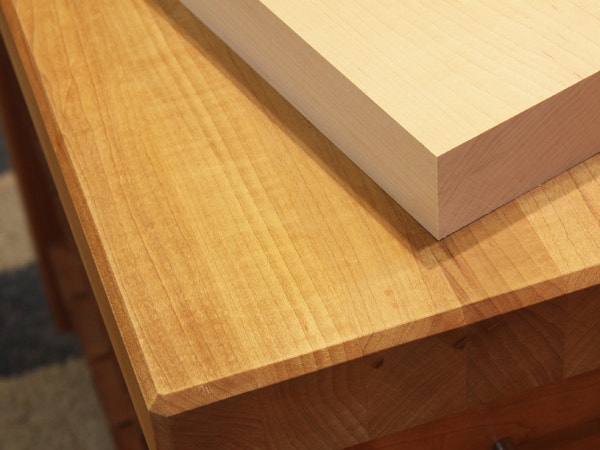Can Maple be Stained to Match Oak?
I am putting in stair steps made of maple. My place has oak stained golden oak. I would like to stain the maple to match the oak. In the past, I have had problems getting maple to accept stain. Do you have any recommendations to help me out? - Peter Sferro
Rob Johnstone: Maple is a close-grained, naturally light-hued wood which, as you have experienced, prevents it from absorbing pigment-based stains. If you take a piece of maple and a piece of oak, sand them to the same degree of smoothness, and then apply the same stain to both pieces, they will look significantly different. You will have a better chance of matching the color of the maple to the oak by using a dye instead of the pigment-based stain (either oil- or water-based). Matching the color will require a bit of experimenting, as it is unlikely for you to find a dye that will be just the hue that you want. I am guessing that you are already aware that, even should you get the two species of wood to be exactly the same color, they will still look different, because they are. Different species, that is. While this is a personal and entirely subjective choice, you might find that you would be happy with a complementary color on the stair tread, rather than a matching color.
Chris Marshall: Rob is right on the money here, Peter. Dye is pretty easy to work with. Wipe or brush it on, then wipe off the excess. You can wet a rag with the same solvent as the dye (alcohol or water) and go over the dyed wood to pull some of the color out if it looks too dark for the shade you're after -- but you'll never get all of the color back out. Or, if the dye isn't dark enough, you can add more or tint it with a darker dye color. Color variations are endless by mixing dyes. Water-based dyes have no real detectable smell, and that's a bonus over stinky oil-based stain! Give them a try on some maple samples and see what you think.
Tim Inman: Joyce Kilmer was a poet. He was killed in WW I. He is the guy who wrote the poem about the Tree. "I think that I shall never see....." The last line of his poem says, "And only God can make a tree." Well, he's right. Maple will never match oak. And why would we want it to? Maple and oak have different grain, different patterns, and different natural colors. Let oak be oak, let maple be maple. What you can do, and I think this is really what you're asking, is make the colors sympathetic with each other. Maple, by its density and grain structure, does not like to "take" stain the way oak soaks it up. An oil-based wiping stain just isn't the right product for you to use -- given your goals. It is a fine product, but not the one you want here. A water soluble dye product would be much better for you. There are also what is called in the trade NGR stains. These are similar dye products carried in a liquid which will not raise the grain like water-based dyes. They are both commonly available. Actually, I prefer the water dyes, and I do not find the grain raising to be much of a problem on carefully prepared wood. Seal the dye in with a wash of shellac, and you'll begin to see the most beautiful wood color you ever imagined. Of course, practice on scrap to get it right before you launch into your new steps! Dyes are not very forgiving once applied. A trigger squirt bottle might be a good tool for you to use to test your sample batch of dye on the scrap boards.
Keep the inspiration coming!
Subscribe to our newsletter for more woodworking tips and tricks





